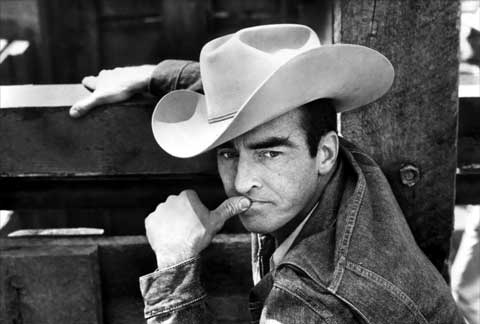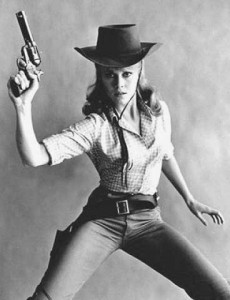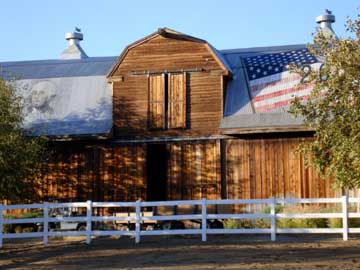The Cowboy Hat
By Jonnie Hughes May 22, 2013
Cowboy hats are the ultimate in funcationality, yet still stylish, as evidenced by Monty Clift in the 1961 film The Misfits.
Where did the idea for the cowboy hat come from?. There are three answers to this question, each more provocative than the last.
The textbook answer is that John Batterson Stetson invented the cowboy hat in the 1860s after joining the gold rush to Colorado. The son of a hatter, Stetson noticed the Wild West was short of bespoke headwear. At that time, cowboys had a choice of floppy felt hats, raccoon skins or Derbies. None were perfect for a life in which the rain, wind, dust, sun and cold took turns to torment. So Stetson stitched together fur felts to make a wide-brimmed hat with a tall crown. It looked ridiculous, but it was stiff, waterproof, and cool. He marketed it as ‘The Boss of the Plains’ and it took the West by storm.
Answer number two: the fact is, The Boss of the Plains didn’t look anything like the cowboy hat we know today. The crown was a uniform dome, with no peaks or dents. The brim was flat, no rolled edges. So Stetson didn’t invent the cowboy hat – the cowboys must have.
The crucial factor is that The Boss was a pricey hat, so each cowboy only ever bought one. They were worn until they fell apart – each night under the stars, rolling the brim, each “yee-haw” denting the crown. Soon enough, in the railhead towns, all the true cowboys wore battered hats, so an aesthetic was born that represented the untamed West – the pursed, rolled cowboy hat. Anyone wanting to blend in had to have one. Stetson and other manufacturers obliged, evolving their ranges over the years to reflect this desire. What we regard today as the cowboy hat is a product of the climate, the hard Western life and the purchasing selections of a hundred thousand cowboys.
Upon production, Stetson’s hat entered a design journey through the selections of a century of cowboys. But it would be wrong to think that the cowboys collectively planned the route. They chose their hats for ‘whatever reasons’ – practical considerations, aesthetic judgements, unfathomable yearnings – no two selections alike. The hat simply bounced through this environment, its form changing subtly for forgotten reasons with each generation. End result: a mindless, unplanned ascent to the hat we know today.
Through meme goggles, no one invented the cowboy hat. If anything, it invented itself.
The American barn
The history of the cowboy hat suggests how idea selection comes about, but what about idea variation, the second vital ingredient of Darwinian evolution. Without variation, after all, there is nothing to select.
As I drove across the plains, a perfect case of idea variation materialized on the side of the highway, with examples every few miles – the American barn. American barns are icons of the West – big, often red, their doors at the gable end, their roofs crooked in cross-section, like a broken stick. It’s an ingenious design because the roof maximizes the volume of storage space available for crops to overwinter. Where did it come from? The American barn is a composite of the barns the Germans and English built on the east coast, with a crooked roof borrowed from Dutch houses for good measure.
But although the mongrel barns on the highway are clearly now the same ‘species’, no two are exactly alike. They have differing door designs, roof lengths, window heights, build materials. What causes this variation? The normal response is to say they vary because the farmers wanted them to vary. But, once again, these goggles question that assumption.
Most of the barns I see are pre-industrial, ‘raised’ by a community, rather than designed by an architect. Picture the scene at one of these barn-raisings: dozens of men and women, some with experience, others without; plenty with strong opinions on what to do when. As the barn goes up, these opinions will be voiced, discussions entertained, decisions made. The availability of funds and building materials, the lie of the land, the wind direction will all play their part.
Ultimately, the barn will come together only upon the negotiation of all these opinions and contributing factors – a unique barn realized imperfectly: the result of a never-to-be-repeated interplay between competing instructions, the peculiarities of the environment and a pinch of good old-fashioned randomness – just like you or I.
This item is excerpted from the The Independent article Meme theory: Do we come up with ideas or do they, in fact, control us?, originally published July 14, 2012.
Short URL: https://theequestriannews.com/?p=14743




